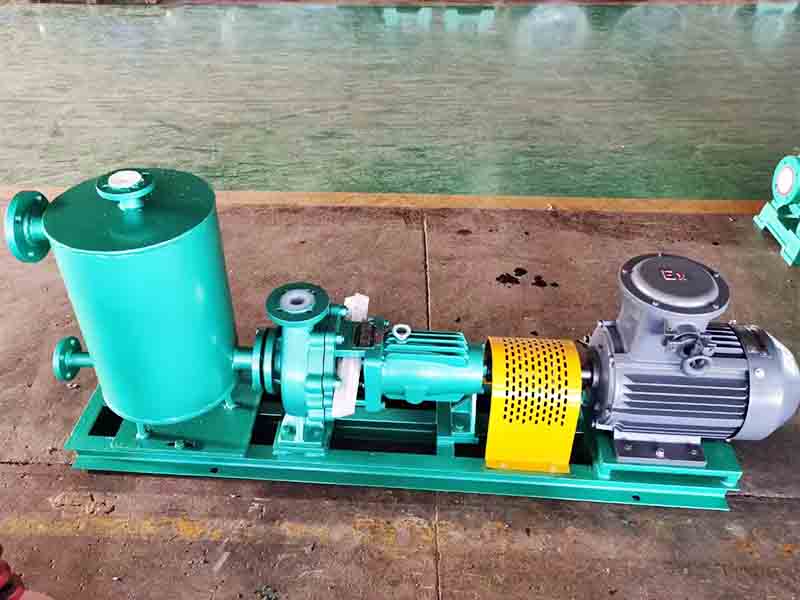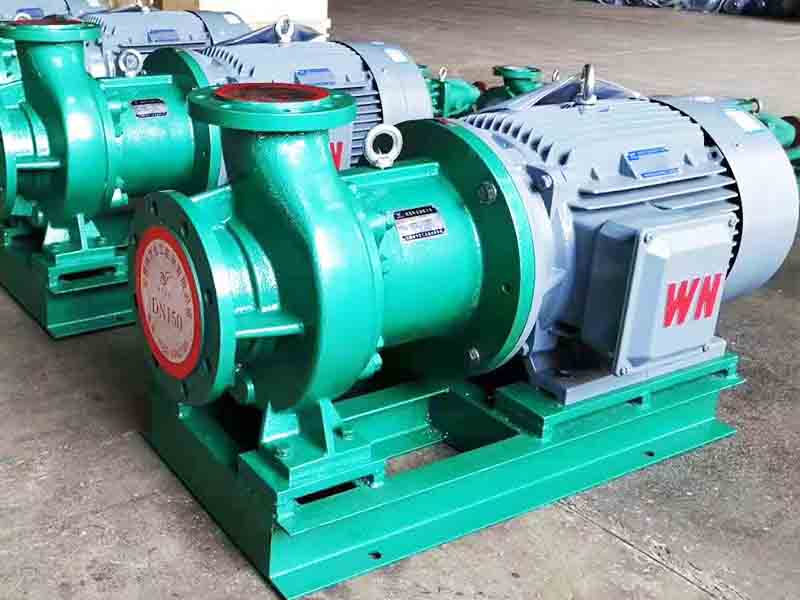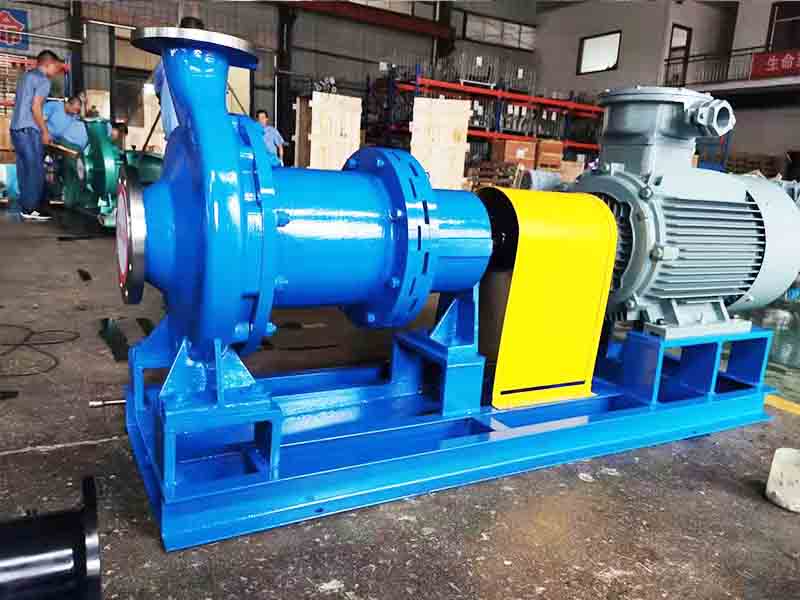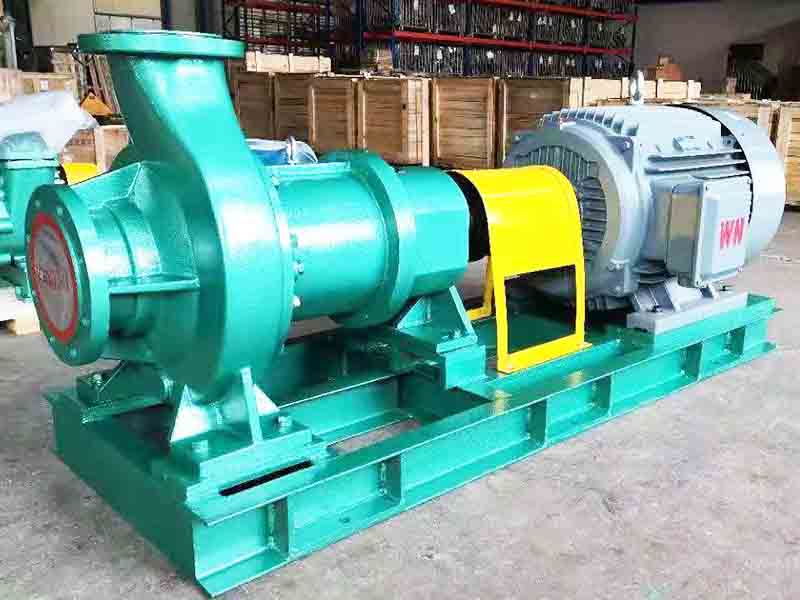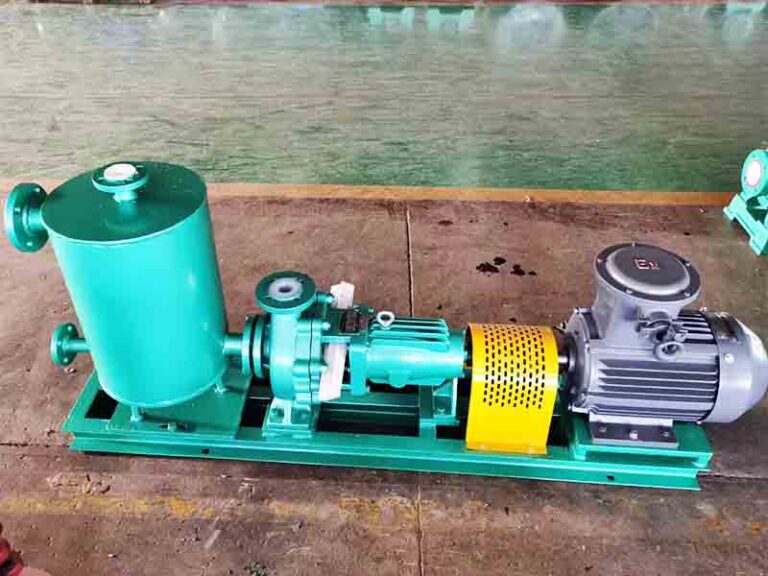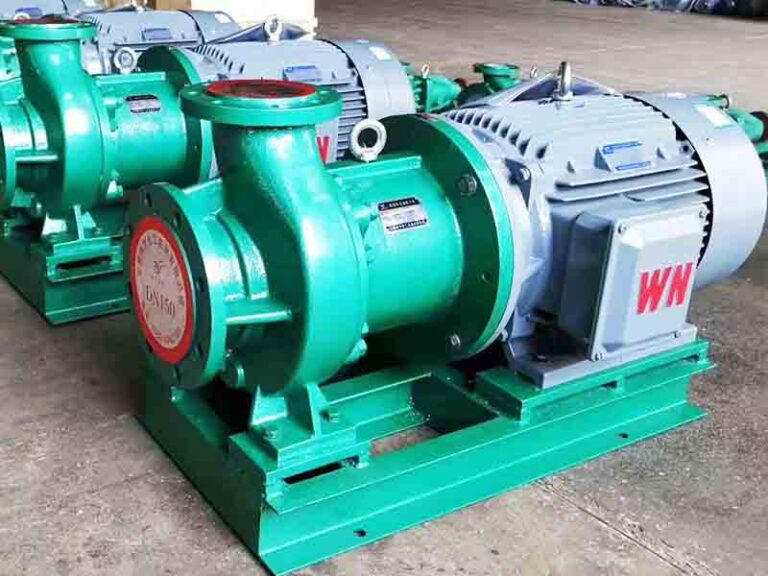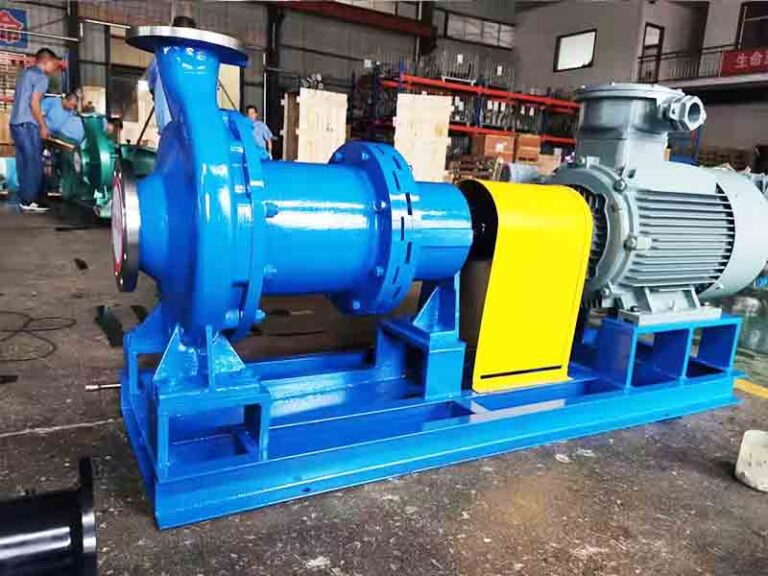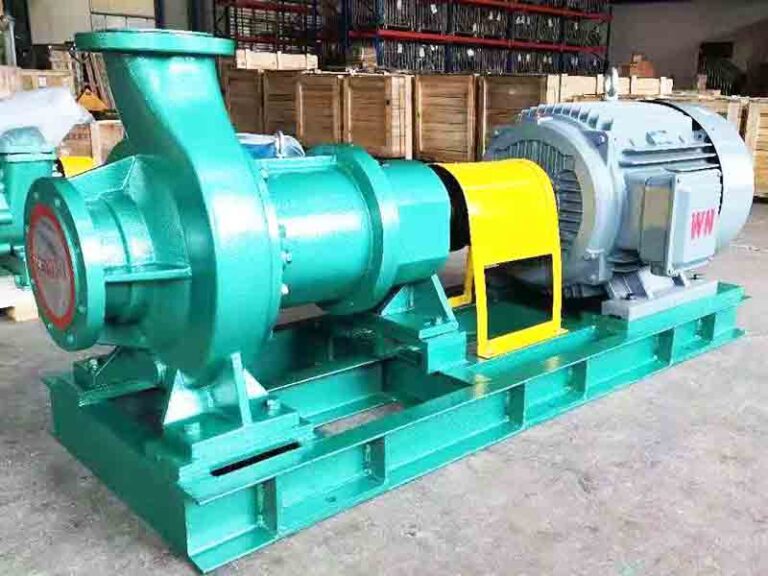In many industrial processes, centrifugal pumps play a key role, and the mechanical seal is the core component to ensure the efficient and safe operation of the chemical pump. Centrifugal pump rotating shaft through the pump casing back end of the stuffing box or sealing chamber, the main role of the mechanical seal is to prevent fluid leakage along the rotating shaft into the atmosphere.
When a mechanical seal fails, apart from causing pump outage and fluid leak it also has the capability to bring about a safety issue as well. This is why the mechanical seal one must choose for every pump application is key when it comes to safety and reliability.
How mechanical seals work in centrifugal pumps
The mechanical seal in a centrifugal pump consists of two soft and flat surfaces. One surface rotates with the shaft, while the other surface remains relatively stationary with the magnetic pump casing. seals, such as O-rings or gaskets, hold the two surfaces in place and provide a degree of flexibility to cope with possible misalignment and wear.
Once fluid is being pumped into the system, the seals of a mechanical seal lubricate; reducing this friction and minimizing fluid leakage between changes Due to this fundamental principle of operation you must be aware before the installation/replacement of any mechanical seal starts.
Materials required for installation
Before starting the installation, be sure to have all the necessary materials and tools ready:
-Wrench: for opening the magnetic driven pump body and removing or tightening bolts.
-PVC saw: essential if the pipes need to be cut.
-PVC primer and glue: to fix the PVC parts for possible piping modifications.
-Mechanical seal: as a replacement part, it is important to ensure that it is of the exact type and size for your centrifugal pump, as described in the manufacturer’s specifications.
Centrifugal Pump Mechanical Seal Installation 10 Steps
Step 1: Disconnect Power
One of the Initial Steps with the installation is to disconnect the power- supply to the centrifugal pump motor; find switch-off main circuit breaker or disconnect switch corresponding for power supply of pump.
It is highly recommended to follow the lockout tagout procedure, which locks the switch in the off position with a warning tag to prevent others from accidentally restoring power. This measure is effective in preventing unintentional startup of the pump during installation and safeguards the operator.
Step 2: Disconnect Piping – Isolate Pump Fluid
Shut down the pump by shutting all valves from the suction and discharge side of the pump. After that, loosen the pump casing drain plug to empty all fluid from stainless steel magnetic driven pump casing This is crucial to avoid any fluid spillage and safely lay out of zone for installation.
Step 3: Disassemble the Centrifugal Pump
Pull back design, first take out the element in the coupling and then undo all the bolts that hold it, pump out of the casing…all way. This design allows direct access to the mechanical seal without removing the pump casing from its connection to the inlet and outlet piping. If the single stage single suction lining fluorine plastic chemical centrifugal pump does not have this design, disconnect the coupling between the motor shaft and the mag-drive pumps before removing all connecting parts.
Step 4: Disassemble the Impeller
Identify and remove the fasteners like screws, nuts or bolts which hold impeller to pump shaft. They are typically located at the front of impeller and sometimes they might be remove through a port on top of magnetic drive pump body.
After removing the fasteners, remove any devices used to lock the impeller in place, such as washers or retaining rings. Finally, carefully hold the impeller and gently remove it from the pump shaft, taking care to avoid damaging the threads and surfaces of the impeller or diesel pump shaft during the operation.
Step 5: Removing the Seal
Before removing the old mechanical seal, clean the surrounding area to remove any debris or residue for better visibility and operation. Most mechanical seals are held in place by locating screws, clamps or gland. Carefully loosen these fasteners with a suitable tool, then gently remove the stationary portion of the seal from its seat inside the pump housing. For rotating parts mounted on the shaft, carefully slide them out along with associated parts such as the drive collar or spring.
Step 6: Replacing the seal
Before installing a new mechanical seal, thoroughly clean and inspect all relevant parts. Follow the manufacturer’s instructions closely. Carefully install the primary ring onto the durable centrifugal pump shaft, making sure it slides smoothly into place without any resistance. If the mechanical seal consists of both rotating and stationary parts, install each part separately according to the manufacturer’s specifications.
For push ring type seals, double check that the spring is correctly oriented and compressed in place to the preset dimensions. Also, check that the elastomeric elements in the seal assembly, such as o-rings or gaskets, are securely seated and lightly coated with a lubricant compatible with the fluid being pumped.
Step 7: Reinstall the Impeller
Slide the impeller back onto the engine centrifugal pump shaft, making sure it is securely mounted, but do not apply excessive force. If resistance is encountered, recheck the installation position and look at the cleanliness and condition of the impeller hub and pump shaft. Installation can be facilitated by applying the manufacturer’s recommended lubricant (on the shaft, not in the impeller bore) in moderate amounts. Once the impeller is in place, secure it by tightening to the manufacturer’s specified torque using the specified fastening components (e.g., nuts, bolts, or set screws).
Step 8: Reconnect the Pump Casing
Reconnect the pump casing using the original pump casing bolts. Manually screw each bolt into the corresponding hole, taking care to avoid cross-threading as this may damage the bolt and threaded hole and compromise the structural integrity of the efficient centrifugal pump.
Step 9: Reconnect the Pump
Carefully align the centrifugal diesel pump with the drive motor, securing it according to the design requirements of the coupling, tightening the connecting parts evenly and systematically to maintain good alignment. Reconnect all external piping and accessories, making sure the connections are secure, but do not over-tighten as this may cause deformation or damage to the piping. Also, check all flanges and connections to ensure that gaskets are properly placed or sealing tape is applied in place to prevent fluid leakage.
Step 10: Restart the Unit
Before starting the centrifugal electronic pump, double-check that all electrical connections are secure and complete. After verifying that nothing is incorrect, restore power to the pump. Allow the pump to run for a few minutes while closely observing for signs of leakage or unusual sounds. This final check confirms that the mechanical seal has been successfully installed.
Practical tips for successful installation of mechanical seals in centrifugal pumps
-Keep clean: Before touching the mechanical seal, be sure to wash your hands thoroughly to prevent oil or dust on your hands from contaminating the seal.
-Avoid touching the sealing surface: the polished surfaces of mechanical seals are critical to their performance, and direct contact with these surfaces should be avoided during installation.
-Use paper towels as an aid: Place paper towels in the work area to collect any dust or debris generated during installation to prevent contamination of seals and other components.
-Place seals correctly: Never place seals face down as this may cause leakage or corrosion.
-Clean the sealing holes: Before installation, clean the sealing holes with a soft paper towel and a suitable cleaning agent to remove all contaminants.
-Follow instructions: Strictly follow the installation instructions provided by the manufacturer.
-Isolate Contaminants: Ensure that all parts of the seal are kept clean and isolated from oil or dirty surfaces.
-Periodic inspection: After installation, periodically check the operation of the diesel engine driven centrifugal pump to ensure that the mechanical seal is working properly.
-Creating a clean environment: Installation in a clean environment will help improve the performance of the mechanical seal.
Centrifugal pump mechanical seal common faults and solutions
Mechanical seal leakage
-Leakage caused by uneven end face: If the flatness of the end face of the rotary ring and stationary ring module is abnormal, which usually belongs to the product quality problem, the only solution is to replace the mechanical seal.
Leakage caused by improper installation: uneven installation of the stationary ring and rotary ring module will make the two modules of the friction sub-module can not be closely fit, resulting in uneven force, in the static pressure state or normal operation of the equipment are very easy to media leakage, but also may damage the rotary ring and stationary ring. In this case, it is necessary to reinstall the mechanical seal according to the standard installation procedure to eliminate the leakage problem.
-Shaft roughness or damage caused by leakage: in theelectronic centrifugal water pump shaft production and processing or routine maintenance process of mechanical scratches, will make the pump shaft and mechanical seals rotating ring of the sleeve part of the seal is poor, which leads to leakage. When maintaining and replacing parts near the pump shaft, care should be taken to protect the electric-driven centrifugal pump shaft from scratches. If the pump shaft has been damaged, the problem can be solved by reworking the pump shaft or changing the sealing method.
-Leakage due to low pressure on sealing surface: According to the principle of leakage, after the mechanical seal is installed and positioned, if the spring pressure is too small, the mutual pressure between the rotating ring and the stationary ring is insufficient, which will lead to an increase in the cross-sectional area of the sealing end face, and thus media leakage will occur.
Before installation, the spring performance of the mechanical seal should be checked, if the performance is poor, then replace the product; if there is no product quality problems, the relative position of the rotating ring and the stationary ring can be adjusted appropriately to improve the sealing surface pressure.
Abnormal noise or buzzing
Mechanical seal of the rotary ring and stationary ring is usually made of metal materials, if the metal materials used are not corrosion-resistant, long-term contact with the corrosive media in the centrifugal pump will lead to corrosion of the mechanical seal rotary ring and stationary ring surface, resulting in sealing leakage failure, and in the normal operation of the electric centrifugal pump in usa issued an abnormal noise or humming sound.
In order to extend the service life of mechanical seals, reduce media corrosion, mechanical seals can be installed at the bypass flushing pipeline, which to a large extent can be solved due to media corrosion caused by the failure.
However, the need to ensure the purity of the flushing water and flushing pressure to effectively ensure that the mechanical seal flushing and cooling effect. In addition, the staff also need to regularly check the operating status of the mechanical seal, to see whether the flushing fluid temperature is normal, whether there are particles of impurities, etc., and regularly clean up the mechanical seal around the debris, to ensure that it operates in a good environment.
Conclusion
Mechanical seal is an indispensable part of the normal operation of centrifugal pumps, which can effectively prevent fluid leakage, protect the corrosion wear resistant slurry pump from damage, and guarantee the efficient operation of the lined-in magnetic driven pump. Compared with traditional packing seals, mechanical seals stand out with their excellent performance and reliability.
However, to ensure the long-term stable operation of mechanical seals, correct installation, standardized operation and regular maintenance are indispensable. By following the installation steps and practical tips introduced in this article, as well as mastering the solution to common failures, you can successfully complete the installation of centrifugal pump mechanical seals, and effectively deal with a variety of potential problems, for the smooth operation of industrial production escort.


